In this series, Tofugu asks learners what Japanese learning resources and methods they use to study and why. Today, we talk to Jonathan Kirk, the guy who made the popular kanji learning app, *Kanshudo*.
Jonathan focused on building up his reading skill first (which led him to create his kanji learning system). So if you want to boost your Japanese reading ability, pay attention. Take it away, Jonathan!
After graduating university, I set out on a six month trip around Asia armed with a kanji book, a Japanese grammar book, and a bilingual Japanese reader. After the trip, I realized how inefficient my learning method was.
So I began a quest to discover the best way to learn Japanese. This was my first step to building the learning system that got me where I am today; I can enjoy reading Japanese novels by my favorite authors.
This system will work for anyone who wants to read Japanese at an advanced level. If you're ready, let's dive in to the key principles and stellar tools I used (daily) to make it work.
- How I Learned Kanji
- How I Learned to Read
- My Favorite Dictionaries
- How I Built Up my Vocabulary
- How I Learned to Listen
- Onward to Japanese Learning!
How I Learned Kanji

Kanji knowledge is a prerequisite to reading. Japanese sentences are on average 18 characters long, and about 5 of those characters are kanji (the rest are kana or punctuation). In newspapers the percentage of kanji can be much higher.
There are different ways to go about learning kanji. My key breakthrough was realizing the vast majority are made up of components used over and over. Thinking of each kanji as a collection of parts enabled me to create short phrases or "mnemonics," which tie the meanings of the components with the kanji I'm trying to learn.
For example, my mnemonic for cha 茶 (tea) ties together its three component radicals in an easily memorized phrase:
the man (人) in the tree (木) turns the grass (艹) into tea.
Of course, you have to learn the components – which in some cases is easy (e.g. 木 looks a bit like a tree, and 艹 looks a bit like grass). But in other cases, memorizing them takes the same effort as learning kana.
After a while, this approach lets me "draw" a kanji in my head just by repeating the mnemonic. I put together about 3,500 mnemonics – far more than you need to read most Japanese comfortably. This became the basis of Kanshudo, an online Japanese learning system I created, which today contains a variety of tools supporting my approach to learning Japanese.
There are different ways to go about learning kanji. My key breakthrough was realizing the vast majority are made up of components used over and over.
After I began using this new learning method, normal dictionaries weren't enough for my studies – I needed to remind myself of a kanji's mnemonics and all its components quickly. Kanshudo does this using what I call the "cascading kanji" format – a way of displaying a kanji (with meanings and mnemonic), with all its components arranged underneath for reference.
For example, here's how Kanshudo displays 鬱 (depressing), the Jōyō kanji with the highest stroke count. The mnemonic is displayed alongside the key reading and meaning:
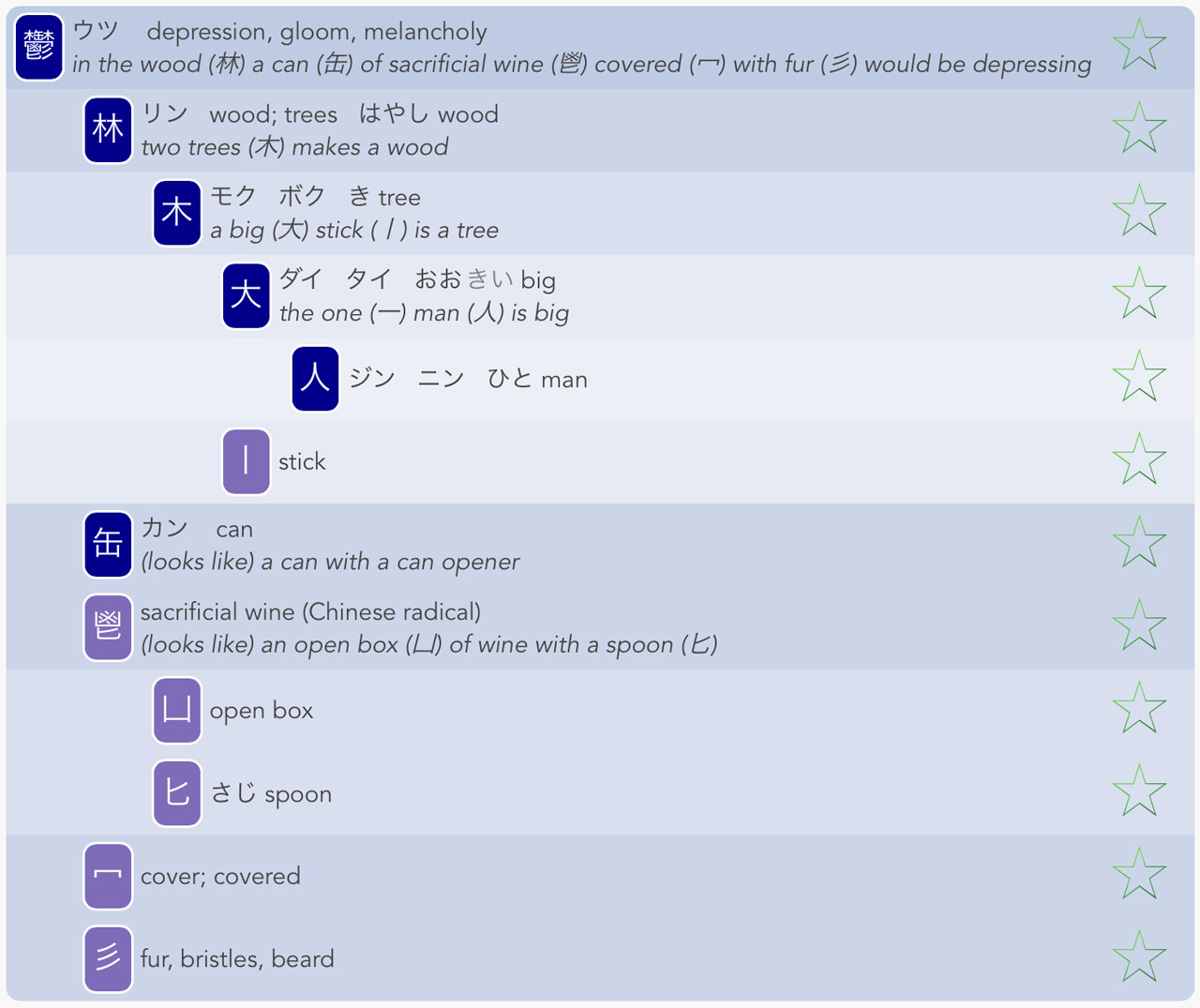
After the main kanji mnemonic, each of the five main components appears on a separate line with its mnemonic. This way, whenever I look up a word, I see the kanji used in it, along with their mnemonics, plus the components and their mnemonics. So looking up one word reinforces my memory of many related concepts, which is tremendously powerful.
How I Learned to Read
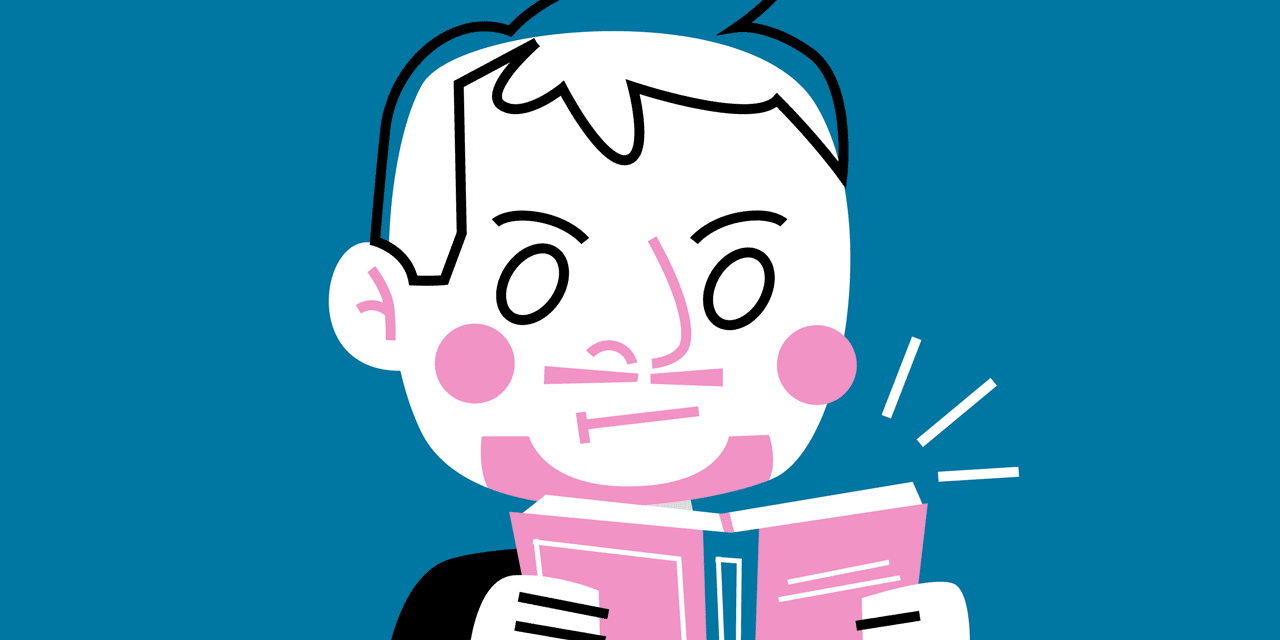
To effectively learn Japanese, you need to read… a lot! But, reading Japanese is intimidating and extremely difficult in the beginning. How do you get past this chicken and egg?
The key is finding material you can finish at a reasonable speed (and enjoying it helps too). If reading takes too long, or you have to look up too many words, you're slowing down your rate of progress. My personal threshold is about five word look-ups per page – If I'm looking up more words than that, reading is a lot less enjoyable.
My reading ability evolved through four distinct stages of material:
- Bilingual readers and the simplified material in textbooks
- Material related to my work
- Simple novels and news
- More complex novels
I tried (many times!) reading things too complex for my level, and I found that to be an exercise in frustration. I had to look up hundreds or even thousands of words, but wasn't able to remember them because I didn't encounter them again quickly enough.
For example, compare these three sentences:
- このふじさんのえはとてもきれいですね。
- This picture of Mt. Fuji is very attractive, isn't it.
- 小さなカバンと 大きなカバンと 二つ 店に 並らんでおりました。
- A small handbag and a large handbag were lined up next to each other in a store.
- こういう 標語は 時として 根本的な 思考の 確認を 迫ることがある。
- There are times when this sort of catchphrase forces one to readdress one's fundamental way of thinking.
The key is finding material you can finish at a reasonable speed (and enjoying it helps too). If reading takes too long, or you have to look up too many words, you're slowing down your rate of progress.
The first is from the last chapter in a beginner textbook1, the second is from an intermediate reader containing stories for Japanese children2, and the third is from an essay by Haruki Murakami3. It's easy to see how the complexity escalates!
So, during the first stage, the best reading material is collections of short pieces, preferably in a bilingual format, based on JLPT level or Kyōiku (Japanese school grade) level. Find pre-curated collections of material, because kanji aside, the material will have simpler grammar, shorter sentences, and fewer idioms.
After I worked through a few basic bilingual readers, I continued with child-friendly reading material – the first two books I read in Japanese were 羊男のクリスマス, a novella by Haruki Murakami, and 星の王子さま, a translation of The Little Prince by Antoine de Saint Exupéry.
From there, I moved on to easier adult novels. For example, I really enjoyed 絶対安全エージェント by Osawa Arimasu, おのぞみの結末 by Hoshi Shinichi, and 君たちはどう生きるか by Yoshino Genzaburo. I worked through the entire Ring cycle set of books by Suzuki Kōji.
At the third stage (where the volume of words I needed to look up declined), I began really enjoying the works of Isaka Kotaro (e.g. 重力ピエロ and ゴールデンスランバー), Higashino Keigo (e.g. 容疑者Xの献身), Yamada Muneki (e.g. 黒い春), Yoshimoto Banana, and Miyabe Miyuki.
Now, I'm a big fan of the adult-oriented fiction of Haruki Murakami (in fact, right now I am reading 騎士団長殺し, his latest).
If you start reading in electronic form, you'll save a lot of time. Whenever possible, I read books using the Kindle app on my phone, because I can copy words and look them up immediately, which is much quicker than having to write them out – especially if I don't know the kanji.
My Favorite Dictionaries
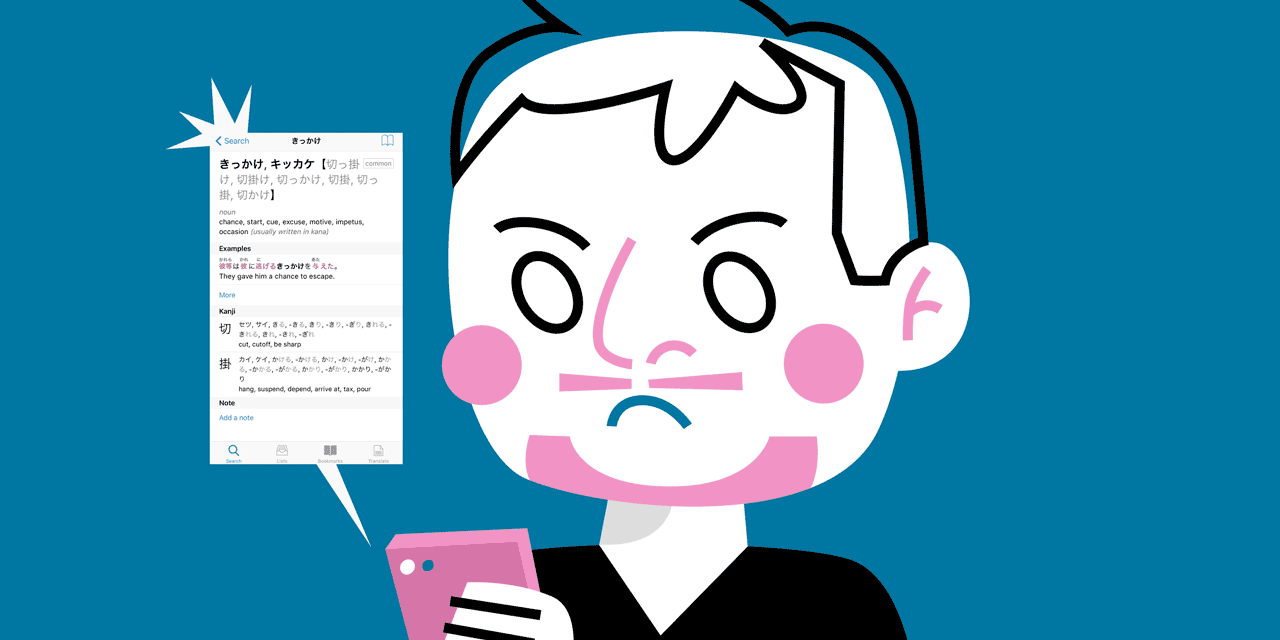
In practice, looking things up is not only unavoidable, it's the only way you'll learn. And if you really want to read Japanese novels (like I did), in the early days you may find yourself looking up a lot words. Typically I had to look up 500–1,000 words per novel.
Looking up this many words is extremely time-consuming, and this is why you need to work with the best dictionaries you can find.
I personally use a combination of three dictionaries:
- Kanshudo
- Midori
- Kenkyusha's 新和英大辞典
Kanshudo
Kanshudo is my go-to dictionary whenever I have good Internet access. Like other online dictionaries, Kanshudo draws on the open source JMdict/EDICT Japanese/English dictionaries, which are comprehensive and constantly updated.
Kanshudo's also presents words so you can learn a specific form of a word independently of other forms, which is not possible with most dictionaries. This is an important factor in Japanese – for example, the common wordきっかけ (chance, occasion) has eight different forms! When learning a new word, you don't want to have to learn all its variants, especially if they use uncommon kanji. Kanshudo presents each form with data on how common it is.
Midori
The iOS app Midori is my go-to dictionary when I don't have good Internet access. It's also based on JMdict/EDICT, and has built-in kanji drawing recognition. It lets you export anything you look up easily so you can then import it into any flashcard app for study.
Kenkyusha's 新和英大辞典
Kenkyusha's dictionary is most useful for its explanations of word usage. It has a very extensive sentence library, and its actual dictionary is deeper than anything based on JMdict/EDICT. When I run into a term that has no obvious direct counterpart in English, or I don't fully understand from the definition alone, this is my resource I reach for.
Unfortunately, the app itself is not cheap, and not as easy-to-use as Midori or Kanshudo; you can't jump to definitions of words used in examples, so I recommend this for more advanced learners.
To give you an idea of how each dictionary handles words, here's a screenshot showing the entry for the word きっかけ:

I typically look up words on my phone, because I use the kanji writing feature a lot. If you are using iOS, this is a tip you may not have run into that I find very helpful: add the traditional Chinese handwriting recognition keyboard. These days it will provide you with the Japanese versions of kanji as well as the Chinese versions. It's the easiest and fastest way to look up kanji you don't know.
How I Built Up my Vocabulary
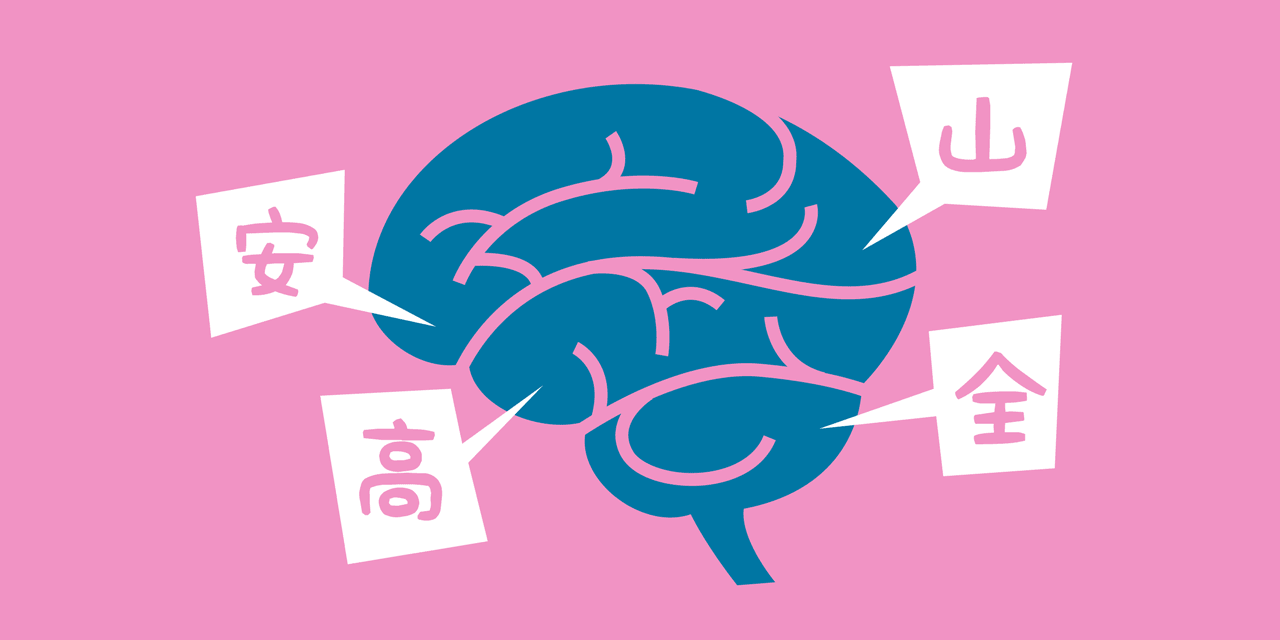
I haven't discovered a magic bullet for learning all the words you will need to read Japanese comfortably. Instead, I recommend developing a system that you can stick to over the long haul.
For most people, learning a word effectively will require you to see it, actively try to learn it, use it often, and refresh your memory of it many times. Here is the system I used to help me manage this challenge.
Find a Bucket
You need a place to store words and to manage learning them over time. Choose something with built-in spaced repetition, such as Kanshudo or an app like Anki. I personally look words up in Kanshudo's dictionary and tag them as favorites, then add them to a flashcard set named after the place I found them (usually a novel I'm reading).
Choose an app you can easily add words to from whatever dictionaries or other sources you use.
Set a Sensible Daily Goal
My daily goal is:
- Review any words that are ready for review in my SRS (Kanshudo presents cards ready for review to me every day automatically).
- If possible, learn five more.
If you are starting out, this probably doesn't sound like much. But I believe five new words a day is about right. Most people get bogged down with the review – learning only five words a day, the reviews will pile up and you'll need 20–30 minutes to review, easy.
If you don't do the reviews, you won't actually learn the words you studied. So manage your new word target so you can definitely do the reviews.
Prioritize Words by Usefulness
I haven't discovered a magic bullet for learning all the words you will need to read Japanese comfortably. Instead, I recommend developing a system that you can stick to over the long haul.
You need to ensure you learn words you're going to need first. This makes life easier, because you'll be able to communicate better; plus, you'll have less looking up to do, so your reading speed will increase as well.
You could focus on words related to your work or words that are more common or useful in Japanese generally. I use Kanshudo to manage this for me by creating flashcard sets containing everything I look up in books, then letting the app auto-sort the most useful words to study first. All words in Kanshudo's system have a ranking indicating how "useful" they are for a learner, based on an analysis of word usage across many different sources such as Google, Wikipedia, etc.
Use and Test Yourself on the Words in Various Ways
Make sure you fully understand a word by reading it in a sample sentence – many Japanese words are used in ways that are not exactly one-to-one replacements for their typical English translations.
Use learning apps that include games to test your knowledge. If you are just starting out, Duolingo's new Japanese app is a great, game-based way to learn.
How I Learned to Listen
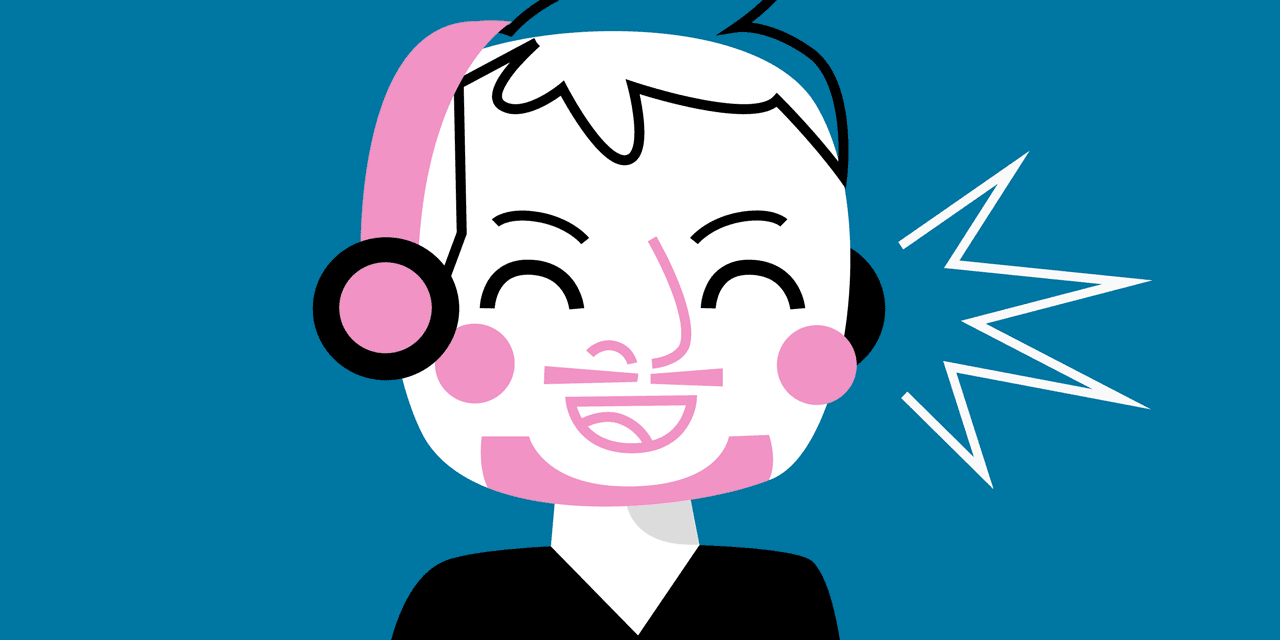
If you want to actually communicate with actual Japanese people, you'll need more than just reading ability. In particular listening comprehension is a key skill you'll need to practice. The good news is listening can be improved just by having conversations with people. So if you can interact with Japanese people in Japanese in any way, that's all you need.
If speaking with Japanese people is not not an option, the two best approaches I've found are podcasts and subtitled videos.
My two favorite podcasts for Japanese listening are are NHK ラジオニュース and 日本放送 ザ・ボイス. NHK's podcast covers the daily news, so it's a great way to reinforce vocabulary on topical events. The Voice also covers topical events in some episodes, but others feature Japanese talents and interviews, so it provides a mix of speaking styles and topics.
However, both of these are aimed at a Japanese audience so the Japanese used is native level. If you are at an earlier stage, NHK has an excellent simplified Japanese news podcast called Easy Japanese - NHK WORLD RADIO JAPAN.
Onward to Japanese Learning!
The above is an outline of the system I've evolved during my personal odyssey towards Japanese reading proficiency. The most important thing I want you to take away is that the challenge of learning to read Japanese fluently is not impossible at all. I hope some of my approach can help you get to where you want to be.
